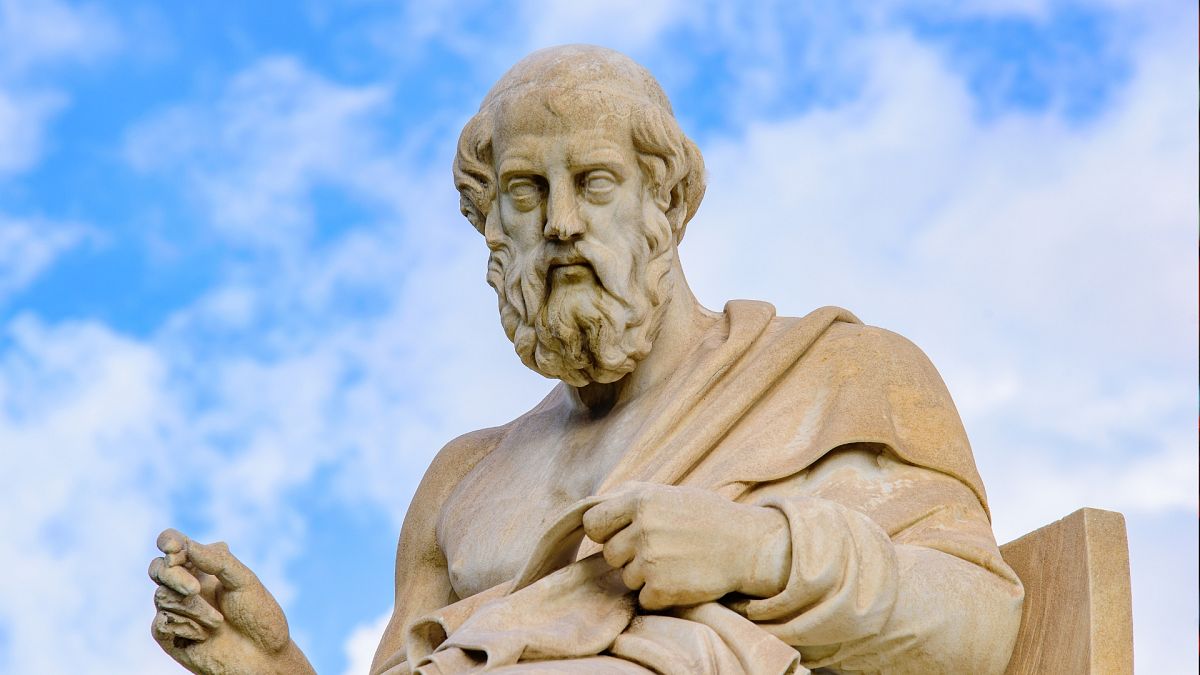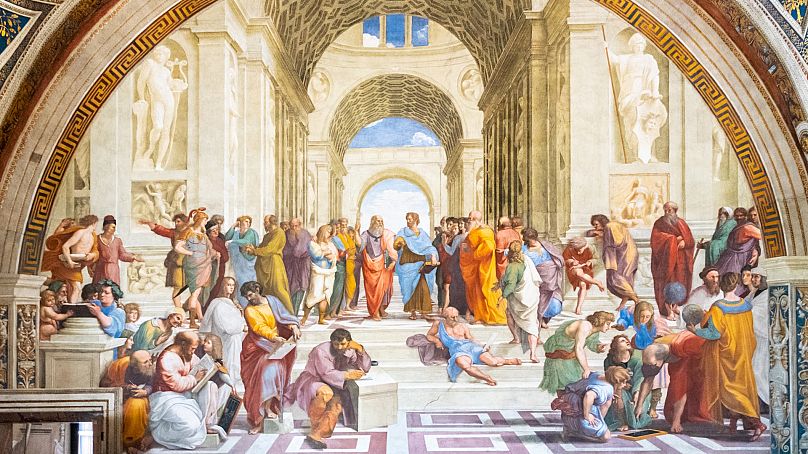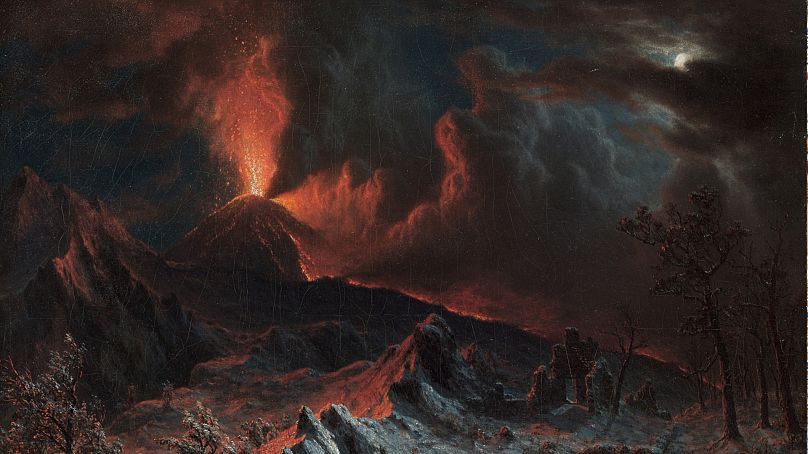The unknown story of Plato’s death may have been revealed from a newly deciphered ancient scroll.
Researchers at the University of Pisa have discovered a narrative purporting to tell the final hours of Plato, one of Ancient Greece’s greatest philosophers. The narrative was found in a papyrus scroll that had been almost completely destroyed in the eruption of Mount Vesuvius in 79AD.
In the text, it tells the story of the philosopher, a disciple of Socrates, who died in 348 BC. The Greek philosopher died in bed as he listened to a Thracian slave girl play him the flute, it suggests.
Supposedly, even in his dotage Plato was still able to critique the flute player’s lack of rhythm. He eventually died and was buried in the garden in the Academy of Athens, near a sacred shrine to the muses.
This new text accords with some of the previously believed details around Plato’s death suggested by Epicurean philosophy Philodemus, but adds potential information about his demeanour in his final moments. It contrasts Diogenes Laertius’s narrative that Plato died at a wedding feast.
It also specifies where in the Academy Plato might have been buried for the first time.
Further to details about his death, the scrolls have also potentially revealed information from Plato’s life. It suggests Plato might have been sold into slavery on the island of Aegina, either around 404 BC when the Spartans conquered the island, or five years later after Socrates was executed.
This is just the latest discovery to come from deciphering the famous Herculaneum Papyri, a collection of scrolls previously thought unreadable due to their damage in Mount Vesuvius’ eruption.
The Herculaneum Papyri were discovered in 1752 by a farmer. At first, most of the charred scrolls were thought to just be charcoal. It was only when someone noticed the faint trace of letters that the breadth of historical knowledge trapped under carbonised papyrus was recognised.
Although early attempts to decipher some of the delicate scrolls resulted in their destruction, hundreds of other scrolls have been housed in museums around the world.
To encourage the deciphering of the Herculaneum Papyri, the Vesuvius Challenge was set up in 2023 with a prize fund of over $1 million (€930,000) for researchers who could make headway with the charred scrolls.
Since then, 21-year-old Luke Farritor won $40,000 (€37,000) from the challenge for successfully decoding the first full word of the scrolls when he found the word “ΠΟΡΦΥΡΑϹ” (purple).
Earlier this year, Youssef Nader, Julian Schilliger and Farritor won a top prize of $850,000 (€790,000) for successfully decoding 5% of one of the scrolls of the papyri.
This latest discovery of the Plato narrative was led by Professor Graziano Ranocchia from the University of Naples. Ranocchia’s team read the papyri with a bionic eye.
In a presentation at the National Library of Naples, Ranocchia thanked “the most advanced imaging diagnostic techniques”.
“We are finally able to read and decipher new sections of texts that previously seemed inaccessible,” he said.





